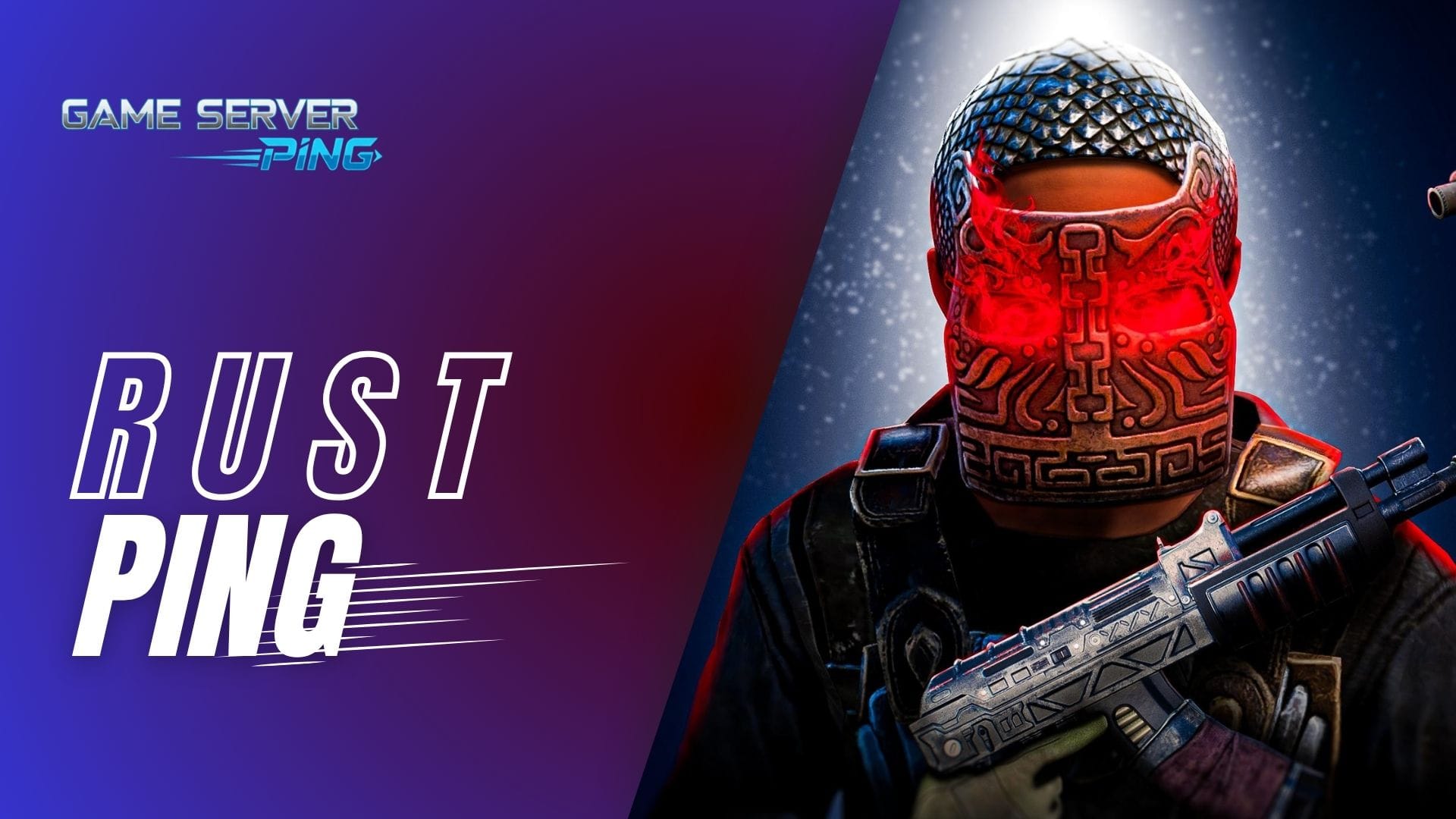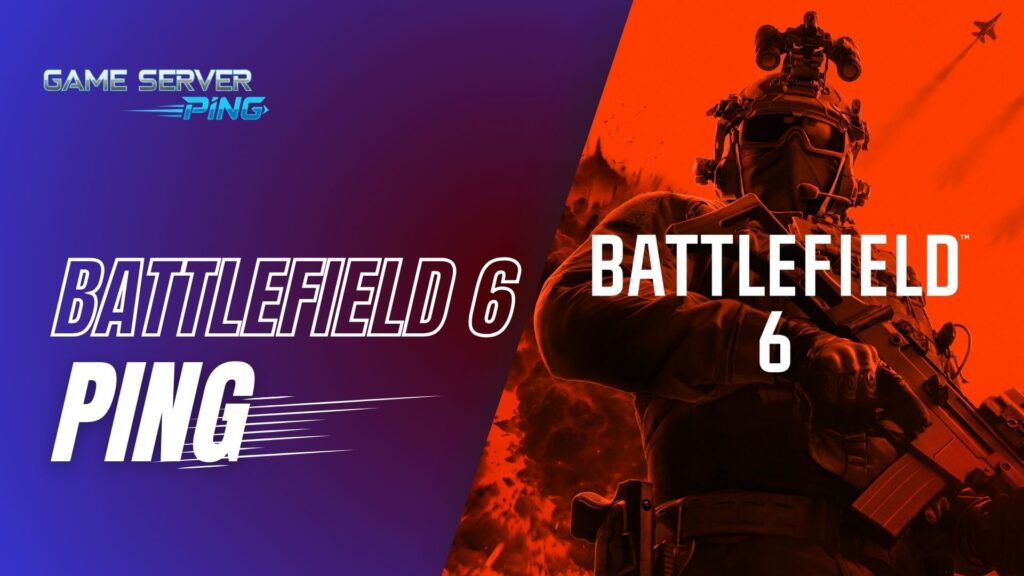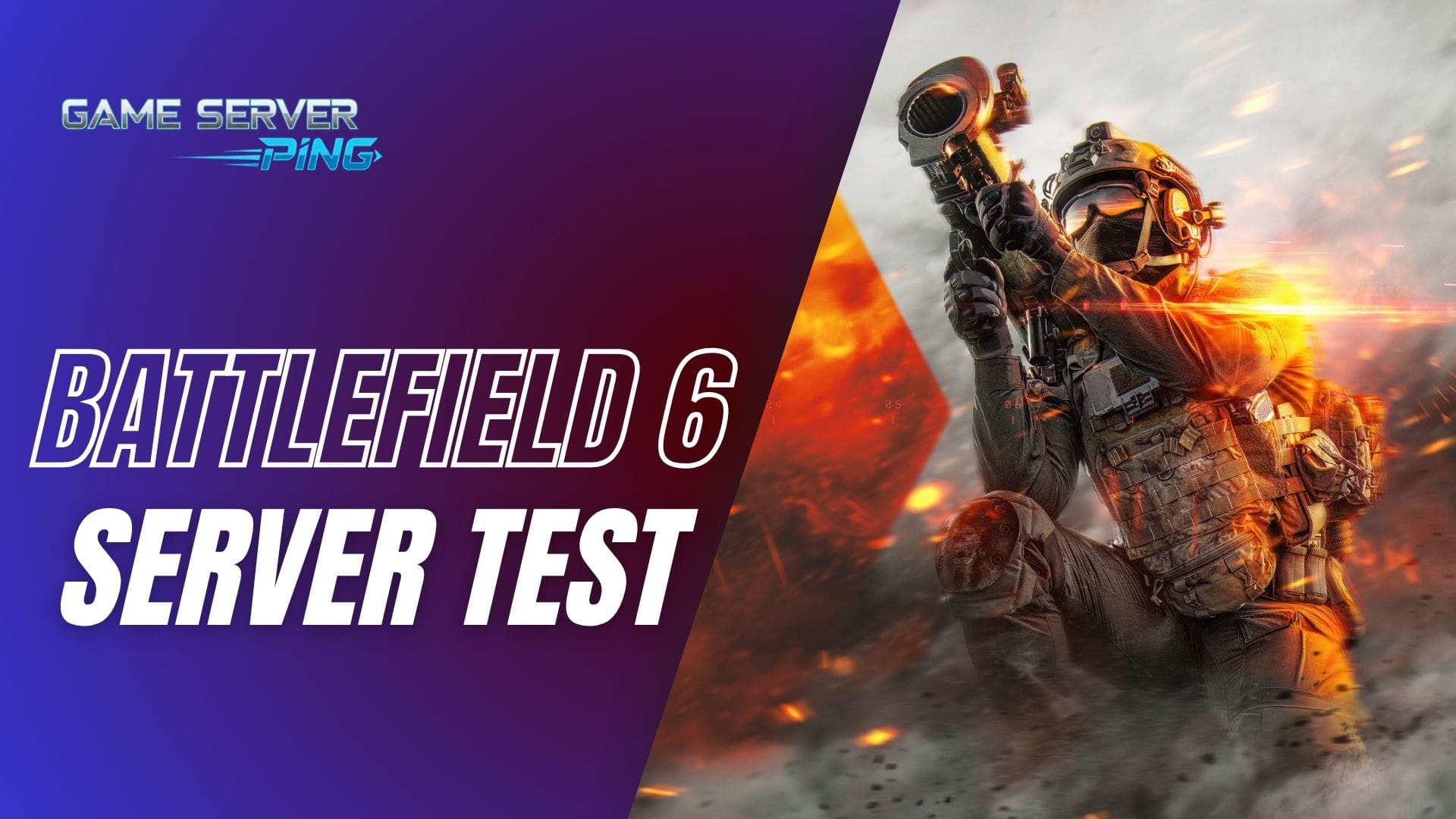Now Reading: Rust Ping Test Live – Check 20 Regions Server Online
- 01
Rust Ping Test Live – Check 20 Regions Server Online

Rust Ping Test Live – Check 20 Regions Server Online
Why Real-Time Server Testing Matters for Rust Players
Competitive survival in Rust demands split-second reactions. Whether you’re defending your base from raiders, engaging in PvP combat, or coordinating with teammates during a monument run, your connection stability directly impacts your survival rate. The Rust Game Live Ping Test tool provides instant visibility into your network performance across 20 global server locations on every Platform like PC Xbox and PlayStation, helping you make informed decisions about which servers deliver the smoothest gameplay experience.
Unlike a standard internet speed test that measures your overall bandwidth capacity, this specialized Rust ping checker continuously monitors your actual latency to game server infrastructure. By testing connections to major data center regions that host Rust multiplayer servers worldwide, you gain actionable data about your real-time network performance—not theoretical speeds, but actual response times that affect every gunfight, every building placement, and every critical moment in-game.
Understanding the Server Infrastructure Behind Your Rust Ping Test
This live ping test tool connects to 20 strategically distributed endpoints across six continents, mirroring the infrastructure commonly used for online multiplayer games including Rust. These test points span North American regions (Virginia, Ohio, California, Oregon, Montreal), European hubs (Dublin, London, Paris, Frankfurt, Stockholm), Asian Pacific locations (Tokyo, Seoul, Singapore, Sydney, Mumbai, Jakarta), Middle Eastern servers (Bahrain, UAE), South American coverage (São Paulo), and African presence (Cape Town).
Check Your Rust Ping Test Servers
Rust Game Live Ping Test
Test your Rust Game ping online instantly with this free live ping test tool for PC, Xbox, and PlayStation players. Check your real-time server latency across major regions like North America, Europe, Asia, South America, the Middle East, and Oceania to enjoy lag-free gameplay, stable connections, and optimized performance in every raid and battle.
 NA East (Virginia)
NA East (Virginia) NA East (Ohio)
NA East (Ohio) NA West (California)
NA West (California) NA West (Oregon)
NA West (Oregon) EU West (Dublin)
EU West (Dublin) EU West (London)
EU West (London) EU West (Paris)
EU West (Paris) EU Central (Frankfurt)
EU Central (Frankfurt) EU North (Stockholm)
EU North (Stockholm) Africa (Cape Town)
Africa (Cape Town) Middle East (Bahrain)
Middle East (Bahrain) India (Mumbai)
India (Mumbai) Asia (Tokyo)
Asia (Tokyo) Asia (Seoul)
Asia (Seoul) Asia (Osaka)
Asia (Osaka) SEA (Singapore)
SEA (Singapore) Oceania (Sydney)
Oceania (Sydney) SEA (Jakarta)
SEA (Jakarta) South America (São Paulo)
South America (São Paulo) Canada (Montreal)
Canada (Montreal)
Each server endpoint receives continuous ping requests every three seconds once you initiate testing. This frequent polling captures not just your baseline latency, but also reveals connection stability patterns over time. The tool tracks up to 10 consecutive measurements per region, calculating both average response time and jitter metrics to give you a comprehensive view of your network quality to each location.
What makes this different from generic network tools is the targeting of actual game server infrastructure. Many Rust dedicated servers operate on major cloud platforms with global presence, meaning your test results directly correlate with real gameplay conditions rather than abstract network measurements. Similar to how players test Valorant server connections or Fortnite network performance, targeting the right infrastructure gives you meaningful results.
Reading Your Rust Ping Test Results: What the Numbers Tell You
Once the ping test begins, you’ll see real-time latency measurements populate for each server region. The display shows your current ping in milliseconds alongside two critical stability indicators: average ping and jitter levels across recent tests.
Green results (under 200ms) indicate excellent connection quality suitable for competitive play. You’ll experience responsive controls, accurate hit registration, and smooth interactions with game objects. This is ideal territory for high-stakes PVP engagements and precision building—the same responsiveness competitive players seek in games like Apex Legends or Call of Duty Mobile.
Yellow readings (200-300ms) signal acceptable but noticeably delayed response times. You can still play effectively but may experience slight delays in combat feedback and door interactions. Resource gathering and base building remain smooth, but firefights become more challenging.
Orange measurements (300-399ms) represent problematic latency where gameplay degradation becomes obvious. Expect delayed hit registration, rubber-banding during movement, and frustrating combat experiences where enemies seem to damage you before appearing on your screen.
Red indicators (400ms+) mark unplayable connections for competitive scenarios. While you can technically join servers, the experience will be marred by severe lag, making survival against other players nearly impossible.
The automatic sorting feature continuously reranks servers based on your best current ping, with the optimal region highlighted for easy identification. This dynamic ranking adjusts as network conditions fluctuate, ensuring you always see your best options at the top.
Interpreting Stability Metrics: Average Ping and Jitter Explained for Gamers
Beyond raw ping numbers, the tool calculates average response time and jitter—two metrics that often matter more than single-point measurements for actual gameplay quality. Understanding the difference between ping and latency helps you interpret these results correctly, as they measure different aspects of your network performance.
Average ping smooths out momentary fluctuations to show your typical connection quality. A server might occasionally ping at 50ms, but if it averages 150ms, you’ll experience that higher latency most of the time. This metric helps you avoid false positives where one good reading masks consistently poor performance.
Jitter measures ping variation between consecutive tests. Low jitter (under 10ms variation) indicates stable routing where your data packets take consistent paths to the server. High jitter (30ms+ variation) signals unstable routing, which manifests as unpredictable lag spikes during gameplay—the most frustrating type of network problem for online gamers.
Consider two scenarios: Server A shows 100ms average with 5ms jitter, while Server B shows 80ms average with 40ms jitter. Counter-intuitively, Server A will likely provide better gameplay despite higher average latency because the consistent response times allow you to adapt your playstyle. Server B’s unpredictable spikes make timing-based actions impossible to master.
The tool color-codes stability metrics using the same threshold system as raw ping, but applies the highest value between average and jitter. A server with 150ms average but 250ms jitter gets orange/red classification because that jitter level will create noticeable problems.
Optimizing Server Selection: How to Choose the Best Rust Servers for Your Location
Geographic proximity usually determines your best server options, but the ping test reveals exceptions that manual selection might miss. Players in Pakistan often find Middle Eastern servers (UAE, Bahrain) deliver better performance than Asian options due to routing infrastructure. Similarly, South Americans sometimes connect better to NA East than São Paulo depending on their ISP’s international peering arrangements.
Run the ping test during your typical gaming hours—network congestion patterns shift throughout the day. A server performing well at 3 AM might struggle during peak evening hours when more players are online. Just as players monitor Valorant server status or Fortnite server availability for outages, testing multiple times across different days helps identify consistently reliable options rather than servers that occasionally excel.
Don’t automatically choose the lowest ping if stability metrics tell a different story. A rock-solid 120ms connection outperforms an unstable 80ms connection that spikes to 200ms+ regularly. Consistent latency allows you to develop muscle memory for compensating slight delays, while unpredictable lag creates unlearnable gameplay conditions.
For players using VPNs or network optimization tools, run tests with these services both enabled and disabled. Some VPN routes actually improve latency by avoiding congested ISP peering points, while others add overhead. The ping test provides objective data about whether your network tools help or hinder performance—similar to how players test GTA V latency under different network conditions.
Regional Server Performance Patterns: What to Expect from Different Locations
North American servers typically offer the broadest coverage with four distinct regions serving western and eastern populations. NA East (Virginia, Ohio) provides excellent connectivity for East Coast US, Canadian, and even some European players with good transatlantic routes. NA West (California, Oregon) serves the Pacific coast and often delivers surprising performance for Asian players compared to local options.
European infrastructure is densely packed with five test points covering Western, Central, and Northern regions. The London and Frankfurt hubs often provide the best overall connectivity due to their status as major internet exchange points. Paris, Dublin, and Stockholm serve more localized audiences but can deliver exceptional performance for players in those specific areas.
Asian Pacific coverage spans the massive geographic region from India to Australia. Tokyo and Singapore servers act as primary hubs serving most East and Southeast Asian players. Mumbai specifically targets the Indian subcontinent, while Sydney serves Oceanic players who often face higher latency to all regions due to geographic isolation. These patterns mirror what players experience across other popular titles like League of Legends or NBA 2K26.
Middle Eastern infrastructure has expanded significantly with dedicated Bahrain and UAE endpoints. These regions previously struggled with gaming connectivity, often routing through European servers. Direct regional servers now provide vastly improved experiences for players in Middle Eastern countries.
South American players traditionally face limited options, with São Paulo serving as the primary hub. Depending on ISP routing, some South American players achieve better performance connecting to NA East servers due to more direct undersea cable routes versus regional infrastructure.
How Network Routing Affects Your Rust Game Ping Results
Internet data doesn’t travel in straight lines—your packets may hop through a dozen intermediate networks between your location and the game server. The ping test implicitly measures this entire path’s efficiency, not just distance.
Your ISP’s network infrastructure dramatically impacts your results. Two players in the same city using different internet providers can see 100ms+ latency differences to the same server based on how their ISPs exchange traffic. Major providers with well-peered networks typically deliver better gaming performance than budget ISPs using congested or indirect routes.
Time-of-day variations reflect congestion at these intermediate hops. Your 1 AM ping test might show 50ms to a server that registers 120ms at 8 PM when the entire neighborhood streams video simultaneously. International connections face additional variables including undersea cable capacity and international peering point congestion.
The tool’s continuous testing captures these fluctuations, building a performance profile rather than providing a single measurement. Ten consecutive tests revealing consistent 100ms ±5ms readings indicate reliable routing. Tests ranging from 80-250ms suggest congested or unstable network paths that will create frustrating gameplay experiences.
Mobile connections (4G/5G) typically show higher jitter than wired connections due to wireless link variability. The ping test quickly reveals whether mobile gaming is viable for your connection or if you’ll face too much instability for competitive play—crucial information for players considering mobile gaming alternatives.
Practical Tips for Optimizing Your Rust Gaming Network Performance
Wired connections eliminate wireless interference that adds latency and packet loss. Even high-quality WiFi introduces 5-20ms overhead and unpredictable interference patterns that the ping test will expose as elevated jitter. A $10 ethernet cable often delivers more performance improvement than expensive network equipment.
Close bandwidth-intensive applications before testing and gaming. Background downloads, streaming services, or system updates consume bandwidth and add latency. The ping test performed while your connection is busy shows worst-case performance, but doesn’t reflect achievable results with a clean network. Running a comprehensive internet speed test helps identify if bandwidth limitations are affecting your gaming performance.
Quality of Service (QoS) configuration in your router can prioritize gaming traffic over other household bandwidth users. After identifying your preferred Rust server regions through ping testing, configure QoS rules for those specific IP ranges or ports to ensure gaming packets get priority during network congestion. This same technique benefits players of GTA V and other latency-sensitive online games.
Test at different times to understand your connection’s performance envelope. If evening results show 50ms higher latency than morning tests, you know peak hours will impact gameplay. This information helps you choose gaming session timing or identifies when you might tolerate higher-ping servers because your preferred regions become congested. Monitoring patterns similar to checking Minecraft server status helps you anticipate connection quality.
Consider your upload speed, not just download. Rust sends significant data upstream for your actions, building, and position updates. The ping test measures round-trip time, which can be impacted by upload saturation even when download bandwidth remains available.
Geographic server selection extends beyond nearest location. Test all regions—you might discover that routing to a more distant server actually provides better performance due to your ISP’s backbone infrastructure. Players sometimes find 200ms to a well-routed distant server plays better than 150ms to a poorly-routed nearby one due to stability differences.
Troubleshooting Poor Ping Results: Common Issues and Solutions
Consistently high ping across all servers suggests local network problems rather than server-specific issues. Check for background downloads, ensure no one else is saturating your connection, restart your modem/router, and test with wired connection. If problems persist, investigate your ISP’s network quality as you may be experiencing broader connectivity problems beyond your control.
Good ping to some regions but poor performance elsewhere indicates routing issues rather than your local connection. This is expected for geographically distant servers, but surprising results (like good European ping but poor NA ping from the US) suggest ISP routing problems that may resolve themselves or require ISP intervention.
High jitter despite acceptable average ping points to network congestion or interference. Wireless connections, shared connections with other heavy users, or ISP capacity problems create this pattern. Solutions include switching to wired connection, implementing QoS, scheduling gaming during off-peak hours, or upgrading your internet package.
Intermittent spikes in otherwise stable results often reflect WiFi interference, nearby network activity, or ISP congestion patterns. The continuous testing reveals these patterns—if spikes occur predictably every few minutes, you’re seeing systematic interference rather than random variation.
All servers showing “unreachable” indicates network connectivity problems or firewall blocking the test requests. Verify your internet connection works for other services, check firewall settings, try disabling VPN if active, or test from a different device to isolate whether the issue is device-specific or network-wide.
Conclusion: Taking Control of Your Rust Gaming Experience
The Rust Game Live Ping Test empowers you with data-driven server selection rather than guesswork. By revealing actual latency, connection stability, and performance patterns across 20 global regions, you can confidently choose servers where your skills determine outcomes rather than network limitations.
Regular testing—especially when experiencing gameplay issues—helps distinguish between skill-based problems and technical limitations. A player struggling with PVP combat might blame their aim when the real culprit is 200ms+ latency with 50ms jitter creating unpredictable hit registration.
Remember that ping testing shows your network’s potential—actual in-game performance adds server population load, game server performance, and application-level factors beyond pure network latency. However, starting with a solid network foundation ensures these additional factors determine your experience rather than fighting poor connectivity.
The tool’s continuous updating, automatic sorting, and comprehensive stability metrics provide a complete picture of your connectivity landscape. Use this information to select optimal servers, schedule gaming sessions during favorable network conditions, and troubleshoot performance problems with objective data rather than frustration and guesswork.
Whether you’re a casual player seeking smooth resource gathering or a competitive PVP enthusiast demanding minimal latency, understanding your network performance through systematic testing gives you the foundation for the best possible Rust gaming experience.
Can I use this ping test tool on console versions of Rust (PlayStation/Xbox)?
Yes, the ping test works on any device with a web browser, including gaming consoles, smartphones, and tablets. However, for the most accurate results, run the test on the same device you use for gaming. Console players should test from their console’s browser if possible, as the network path from your console may differ slightly from other devices on the same network due to different network adapters and internal routing.
Why does my in-game ping sometimes differ from the ping test results?
The ping test measures your connection to data center infrastructure, while in-game ping includes additional factors like server load, game processing time, and application-level overhead. A server hosting 200 active players will show higher in-game ping than the same empty server due to computational demands. Think of the ping test as showing your network’s baseline potential—your floor, not ceiling. In-game performance typically adds 10-30ms to these baseline measurements during normal server loads.
Should I test with my VPN connected or disconnected?
Test both ways to make an informed decision. Some VPNs route your traffic through optimized gaming networks that actually reduce ping, while others add 20-50ms overhead. Run the ping test with your VPN on and off, then compare results for your preferred server regions. If the VPN adds less than 20ms but provides other benefits (security, access to region-locked servers), the tradeoff might be worthwhile. If it adds 50ms+ with high jitter, disconnect it for gaming sessions.
How often should I run the Rust ping test?
Run a full test whenever you notice gameplay performance changes, switch internet providers, or before committing to a new server community. For regular monitoring, weekly tests during your typical gaming hours help track connection consistency. If you’re troubleshooting specific lag issues, run tests multiple times across different days and times to identify patterns. Your connection quality can vary significantly between 3 PM on a weekday versus 9 PM on Saturday when internet usage peaks.
Does using a gaming router really improve ping test results?
Gaming routers don’t magically reduce your base latency to distant servers—physics and your ISP’s routing determine that. However, they can improve consistency through better Quality of Service (QoS) features that prioritize gaming traffic, reducing jitter when other devices consume bandwidth. The ping test’s jitter measurements will show if a gaming router helps your specific situation. If your current setup already shows low jitter (under 10ms), an expensive gaming router won’t provide meaningful improvements.
Why do some servers show “unreachable” while others work fine?
Unreachable” results typically indicate firewall restrictions, network routing issues, or temporary server maintenance rather than problems with your connection. Corporate networks, school WiFi, or restrictive ISPs sometimes block connections to certain data centers for security policies. If only one or two regions show unreachable while others work normally, the issue lies with routing to those specific locations. If all servers show unreachable, check your firewall settings or try from a different network to isolate the problem.
Can weather conditions affect my Rust ping test results?
Weather rarely affects modern fiber and cable internet connections directly. However, if you’re using satellite internet, heavy rain or snow can significantly degrade performance—a phenomenon called “rain fade.” Wireless home internet (4G/5G) may also experience weather-related disruptions. The ping test will reveal these impacts through increased latency and jitter during storms. If you notice correlation between weather and poor test results, your internet technology may be vulnerable to atmospheric conditions, and you might need to avoid competitive gaming during bad weather.














